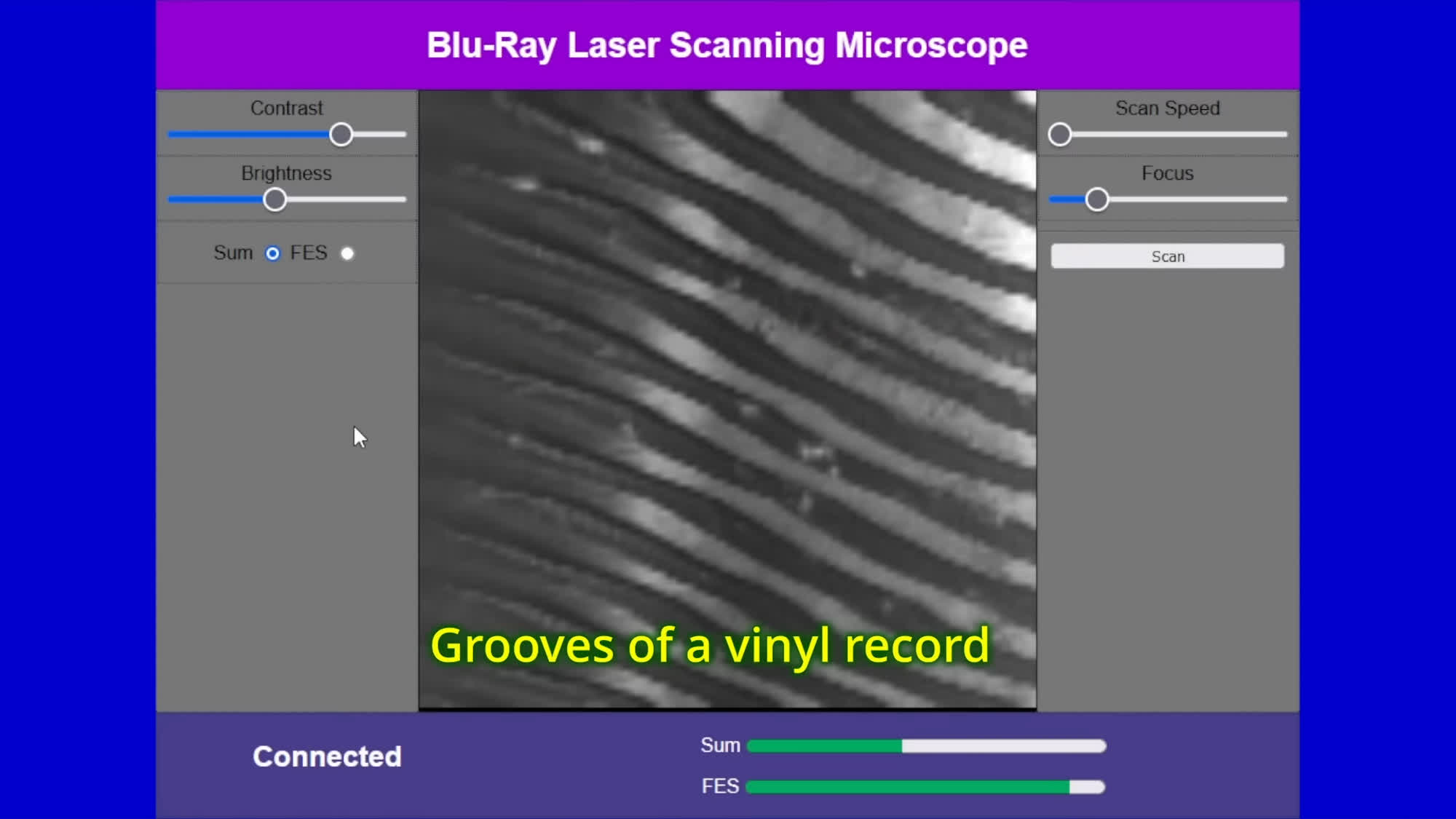
[ad_1]
In brief: Even though Blu-ray players have been mostly replaced by streaming and video-on-demand services, they can still serve a purpose. A resourceful YouTuber shows he could turn said player into a cheap, laser-based microscope, for instance.
Designed by German YouTuber Doctor Volt, a recent DIY project uses parts of a defective Samsung BD-J5900 Blu-ray player to put a laser-scanning microscope together. Compared to optical microscopes, laser-based microscopes can capture much more details – and with a higher magnification level – by focusing on a single point at a time to remove interference.
Blu-ray players work in a similar way: the “blue” diode beams a 405 nm laser onto a Blu-ray disc surface, and then an optical sensor converts the reflected light into a binary digit (“1” or “0”) depending on the intensity of the reflection. “By running that same process and recording each intensity measurement,” the hacker explains, it is possible to “create an image of the surface of whatever the laser scans. The resolution is a function of the physical movement of the laser as it scans.”

As explained on his YouTube channel, Doctor Volt used several components of his Blu-ray player together with additional plastic parts to create a proper scanning device. The final design can produce images using 16,129 measurements, one 127×127-pixel image at a time – which the hacker scaled to 512×512 pixels for easier reading.
Doctor Volt tried to scan different kind of surfaces with his DIY scanner, including a piece of fabric, a sheet of millimeter paper, tiny grooves of a vinyl record. Rendering the final image through a Java-based browser interface takes time and patience, but the alternative is much more expensive than the few tens of dollars spent to create the DIY scanner.
Doctor Volt estimates his laser scanner can resolve “structures of roundabout 5 micrometers,” an incomparably better result than the maximum magnification power of optical microscopes which is typically limited to around 1000x. A DIY solution may be slow and cumbersome, but a commercial laser scanner used in a lab environment can cost tens of thousands of dollars so there’s nothing to complain about here.
Besides recording the entire building process and posting it on YouTube, Doctor Volt put together everything that’s needed to replicate his project on the Hackster online community. He describes the parts and the story behind the DIY laser scanner, sharing the schematics, and the software source code as well.
[ad_2]